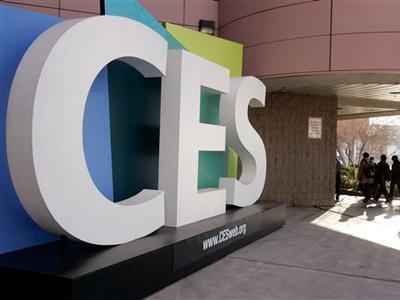
While at the Consumer Electronics Show, and all the way to this very day, I've been asked the same question: Aaron, what was the most interesting thing you saw at CES?
If there's anything that I picked up from CES 2010, it's the fact that Android is king. Thanks in part to the versatility of Android, the OS is being utilized in almost every mainstream electronic appliance on the marketplace. From upcoming tablet PC's to netbooks to eBook readers to refrigerators, Android is being implemented as the operating system of choice. I knew Android was up and coming, but the sheer number of products showcasing Google's OS was staggering. Move over Apple, you have a competitor coming up fast, and they have the benefit of diversity.
The rest of the news - on the wireless front, at least - was mostly expected. Palm announced the Pre Plus and the Pixi Plus, both destined to Verizon Wireless on January 25th. With a new navigational input pad similar to the Pixi's, 16 GB of storage space, an improved keyboard and slider mechanism, a Touchstone back installed out of the box, and Wireless Hotspot, the Pre Plus is quite the upgrade. The Palm Pixi Plus offers Wi-Fi, and that's about it. Both are said to sport "upgraded" processors, though I couldn't get anyone to disclose an official number.
The Motorola Backflip, which appears to be AT&T's first Android smartphone (I know it's not announced as of yet, but c'mon AT&T, don't put the stock Backflip picture in your keynote address unless you want people to make assumptions), sports a unique, albeit mildly irritating design. I'm sure that many will disagree, but their thoughts will likely change when the phone is mistakenly placed in a puddle of condensation on the table.
Sprint's Overdrive product was a welcome addition to the marketplace, but nothing earth shattering. We knew that the carrier was working feverishly on their WiMAX coverage footprint, and the MiFi-esque Overdrive product serves as an attempt to further their marketshare (a good idea, considering no other wireless carrier is offering 4G at this time). When 4G isn't available, the unit reverts back to 3G. Other improvements include a display with connectivity information, signal strength, number of users, and battery life.
On the accessory front, RIM announced the BlackBerry Presenter, which is clearly targeted towards a particular demographic (see video for a demonstration). Like it sounds, the BlackBerry Presenter allows BES users to play Powerpoint presentations in the board room. Features include the ability to freeze, activate a blank screen, view speaker notes, and more.

My favorite part about the trip...was meeting my colleagues!
Though few readers knew (until we started discussing it before and during the trip), most of the PhoneDog editors hadn't met in person, with the exception of Adriana and I during CTIA Fall 2009 in San Diego. While the technology was the focus of the convention, being able to spend time with the PhoneDog Crew was the greatest perk of the trip. I can't say enough positive words about these guys, so I'll leave it at that.
So, my take - stay tuned, because Android is going to be an industry changer. Palm is back in the game, landing on the nation's largest wireless carrier (with rumors of an announcement on AT&T soon). Motorola has joined the Android bandwagon, and seems to be successful. What will the future hold? Considering the increasingly present convergence between the computer and wireless worlds, your guess is as good as mine.